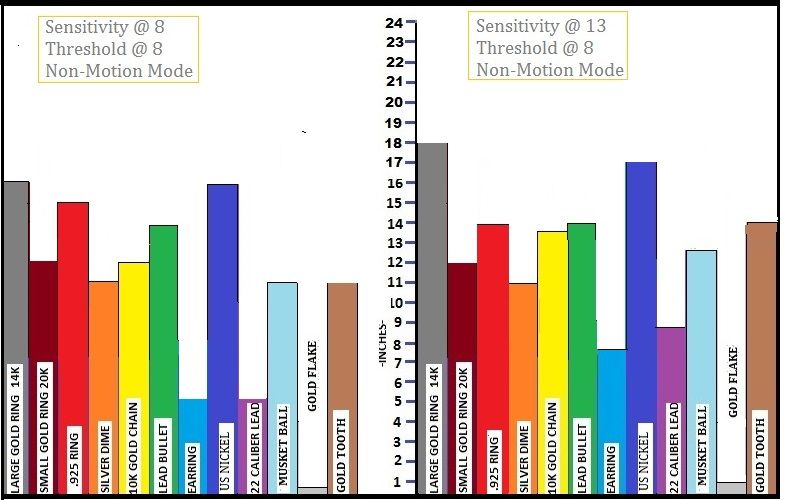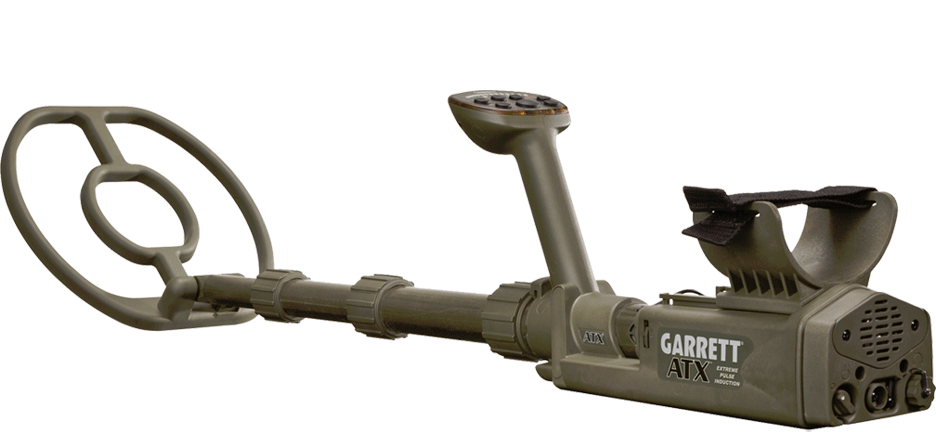
Here are todays air tests performed on the ATX metal detector. Again, to maintain a certain level of reliability, no rings, no belts, watches and I wore sweats. Test performed in the woods. No power lines for at least 1/4 mile. Today I did the test without wearing the headsets. Wearing a headset on my last set of non-motion air tests resulted in unrealistic results. The curly cord on the headset will get picked up on the coil in non-motion mode, giving me results so good that they were wrong. I did another test today, same targets, only using the speaker on the ATX box on full volume. As expected, increasing the sensitivity gets better depth. Increasing the threshold also increases the depth, although there comes a point where the audio gets too saturated with interference, making the high-low targets hard to distinguish, however, the low-high targets still easy to here. In non-motion, you have to use the re-tune button often, otherwise the unit starts to drift and the audio increases. While hunting this afternoon, I switches back and forth between motion and non-motion mode, and you definitely get a stronger audio with the non-motion mode. The targets with a larger mass tend to get picked up deeper in non-motion mode, whereas the smaller targets do well in motion mode. I am guessing that the non-motion mode would be the number one choice when searching for deep large gold nuggets.

Here are the results of the same targets, with both sensitivity and threshold set at eight, to compare the motion mode against the non-motion mode. The ATX maintained the same settings, such as ground balance, operating frequency, auto track, volume and position of coil. Not all targets get better depth in non-motion mode, The small gold ring actuallu lost depth in non-motion mode. Possible due to positioning of the ring to the coil and maybe some human error. The 22 bullet also lost some depth in non-motion mode, maybe for the same reason as just noted. However, overall.....the non-motion mode definitely will give the user better depth.
Of course, this could be affected by the usual factors such as mineralization, EMI, set up of detector, coil size, just to name a few.



